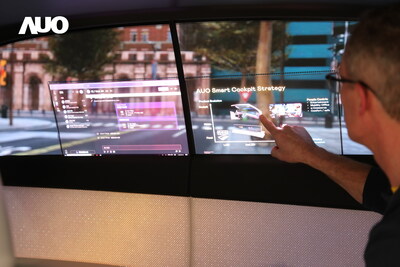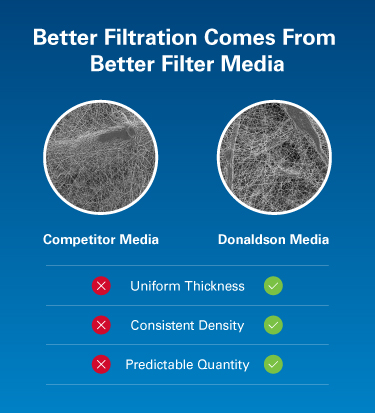

The Swedish automotive electronics research- and development enterprise Pelagicore presents a new infotainment software framework. The Linux-based software for music, video and telephony is integrated into one head unit with COQOS. COQOS is an operating system that is able to integrate Linux-based infotainment applications with the typical vehicle functions on one and the same hardware. It is developed by OpenSynergy. Jointly OpenSynergy and Pelagicores offer a complete framework, to the automotive industry where only the vehicle manufacturer’s user interface has to be assembled
Several vehicle manufacturers and suppliers founded the GENIVI consortium in March 2009 to develop a standardised automotive infotainment reference platform (IN-Vehicle Infotainment (IVI)). The platform is based on the open operating system Linux, which, apart from its robustness, permits access to the many different consumer electronics applications. Pelagicore’s Michael Söderberg is Chairman of the “Reference System Working Group” in the GENIVI alliance. This is because Pelagicore has gained a lot of experiences in In-Vehicle Infotainment Reference Design and posses a solid expertise in hardware and software (e.g. Linux) development. Pelagicore originates from the company Mocean that is active in the audio/video processing market segment, developing solutions for MP-3/CD/DVD/Blu-Ray players, amplifiers and displays. Now Pelagicore is the first company offering a GENIVI compliant distribution of In-Vehicle Infotainment-Software.
Together with Pelagicore the GENIVI partners intend to further develop this shared platform to enable its architecture to be scaled across infotainment devices of different sizes in a robust manner. This flexibility opens the market for smaller software providers. It offers greater flexibility to the manufacturers and permits them to focus on truly differentiating topics.
While the work of GENIVI ensures the successful development of the infotainments systems for the vehicle, it does not guarantee their integration into the total vehicle system. The integration into the automobile demands the systems to meet the automotive requirements, such as AUTOSAR compatibility.
Other barriers on the road of GENIVI application integration in the vehicle result today from the fact that infotainment systems typically have to start considerably faster than is currently possible with Linux. For example, the rear view camera must be available already a few seconds after starting. The integration into the vehicle network, such as CAN, or the integration of function domains, where their applications require real-time properties, also represent challenges, which cannot easily be realised with Linux.
The unique solution now comes from OpenSynergy with its core product COQOS. This software platform contains the µOS, a very small but real-time-capable micro-kernel-based operating system, running directly on the hardware. Functions of the system that must be available quickly after the start, that have to meet real-time requirements during operation, or that need to remain separated from the Linux kernel for other reasons, run directly on the µOS. As hypervisor, the µOS permits the execution of a Linux kernel, including all applications, virtualised above the µOS. The entire architecture specified by GENIVI can therefore run above the µOS and in parallel to time-critical applications.
Virtualisation technology enables to partition different software systems so that they can be merged into a single CPU without affecting each other. COQOS therefore is the key for the integration of infotainment systems in AUTOSAR environments. AUTOSAR is the interface standard for functions in the automotive industry, which ensures that they can be reused in the long term and in a sustained manner. The COQOS platform is the first of its kind that combines AUTOSAR with the advantages of virtualisation. For example, one or several securely separated AUTOSAR partitions can run besides and safely separated from a virtualised Linux infotainment system. Thus COQOS, for example, through its support for the new X86 architecture, turns the new automotive-capable Intel Atom processor into the first X86-compatible AUTOSAR environment.
OpenSynergy, through its membership in the GENIVI Alliance ensures that the interfaces on the reference platform meet the automotive requirements. GENIVI core member Pelagicore now is the first company integrating their GENIVI compliant infotainment framework with COQOS into one head unit. Furthermore software of third-party suppliers will be added to it. So finally Pelagicore and OpenSynergy will jointly be able to offer a complete AUTOSAR and GENIVI compliant framework, where only the vehicle manufacturer’s user interface has to be assembled.
At present OpenSynergy and Pelagicore are constructing a prototype showing the Pelagicore Software Framework and COQOS operating system running on a new generation of GENIVI reference hardware. This prototype can be seen on the world’s largest consumer technology tradeshow, the International CES in Las Vegas from 7th to 10th January 2010.
Automotive Industries spoke to Mikael Söderberg. Co-Founder and CTO at Mocean Laboratories AB.
Pelagicore is offering a new infotainment software component. Could you explain what the product is about?
Our new product is called Pelagicore Software Framework. It contains different infotainment components, for example for music, navigation and telephony as well as the required infrastructure functionality. All applications of the distribution are based exclusively on Linux-Software. This corresponds to what we are developing together with other partners in the in-vehicle-infotainment industry. These partners formed the alliance called GENIVI (www.genivi.org) developing a standardised automotive infotainment reference platform. Our new software-framework is the first corresponding to this reference platform. Using this platform we help our customers, the tier-I companies, in adopting GENIVI right from the beginning and harvesting the benefits that come with using the standardized platform.
Could you describe the target market for this new product and explain the actual situation?
Our applications are produced especially for the automotive industry. We have been committed to automotive for a long time, for example in several models of Audi and BMW you find infotainment systems from our sister company Mocean offering rear seat entertainment capabilities. Today end customers are used disposing of good consumer electronics and telecommunication devices. They get to know new applications and functionalities in short product cycles. This creates demands which the automotive industry would like to meet. In the past, some systems were developed from scratch for this purpose and not based upon a common framework without reuse of components. This resulted in very high costs, always accompanied by major time and cost efforts. As a consequence, only very few companies are able today to successfully complete such comprehensive development projects.
The solution for this problem seems to come from the Berlin company OpenSynergy with its core product COQOS. Can you explain how automotive industries benefits of this unique operation system?
The Pelagicore Software Framework as well as GENIVI reference platform relies on Linux for providing the latest infotainment and consumer electronics functionality. The operation system COQOS enables the integration of GENIVI based infotainment systems into automotive systems. Vehicle manufacturers and suppliers are no more in need to develop commodity infotainment functionality and can now focus on differentiating applications. That means less time of development, less costs and a better user experience.
The new Pelagicore Software Framework includes COQOS. That means different infotainment software systems as well as COQOS are integrated into one and the same hardware. Therefore the Framework can easily be integrated with other automotive systems. Only the vehicle manufacturer’s user interface has to be assembled
COQOS is going to suit further purposes. As its technology is based on virtualization the different software systems on a common head unit can be partitioned so that different functions cannot interfere with each other. At this, the software of a single partition only has access to the memory, processor and periphery resources explicitly allocated to the partition. Mutual interference can therefore be largely excluded through such an intelligent system design. This makes it possible for different systems to be concentrated on a few control units. Even functions from different suppliers can be integrated in the same hardware through the virtualisation.
You are chairing a GENIVI working group. How do you appraise the relevance of COQOS for the future of GENIVI?
GENIVI plans to support different architecture versions already during the development of the reference platform. Apart from the native Linux version where Linux runs native on the hardware, GENIVI envisions this virtualised architecture as solution for linking the GENIVI components to the vehicle network and in particular to AUTOSAR. OpenSynergy, through its membership in the Alliance, therefore ensures that the interfaces on the reference platform meet the automotive requirements.
We consider OpenSynergy as very important partner. It is the only company that offers a product solving this key problem of compliance between infotainment systems and automotive requirements.
Will car drivers, who actually are the end customers, realize the difference between your new infotainment framework and other infotainment systems?
The end customer is going to profit of this new technology invented by OpenSynergy especially by enjoying lower costs and by being able to use new consumer electronics functionality in the vehicle earlier. The Open Source System enables to upgrade existing software and to install new applications as for example new data for the navigations system and all the features people are used disposing of their mobile telephone.
Are Pelagicore and OpenSynergy planning further cooperation concerning the integration of COQOS?
At present OpenSynergy and Pelagicore are constructing a demonstrator showing the Pelagicore Software Framework and the COQOS operating system running on a new generation of GENIVI reference hardware. This demonstrator can be seen on the world’s largest consumer technology tradeshow, the International CES in Las Vegas from 7th to 10th January 2010.














More Stories
NXP accelerates the development of software defined vehicles with new family of Ethernet switches
Flexible Magna Manufacturing Solutions: The Key to Success in the Automotive Industry
DuPont technology helps improve EV battery durability and performance